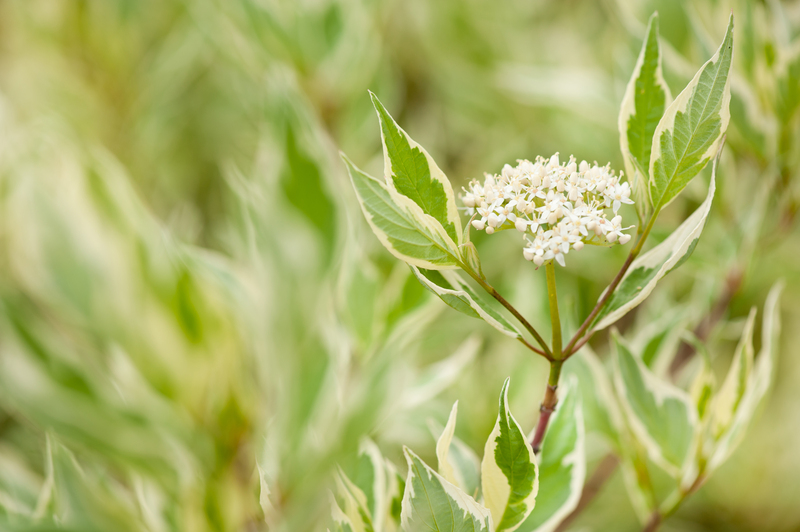Effective Ways to Tame Excessive Wind in Your Green Space
Posted on 28/05/2025
Effective Ways to Tame Excessive Wind in Your Green Space
Wind is a natural force that shapes landscapes and gardens worldwide. While a gentle breeze can freshen your outdoor oasis, excessive wind often wreaks havoc on your plants, outdoor structures, and overall peace of mind. Whether you have a balcony garden, a spacious backyard, or a rooftop retreat, managing strong winds is crucial to creating a thriving green space. In this comprehensive guide, discover proven strategies to reduce wind damage and promote a lush, serene environment in your cherished outdoor area.
Understanding the Impact of Wind on Your Garden
Before exploring the best ways to tame wind in green spaces, it's vital to understand how wind affects your garden:
- Desiccation: Wind speeds up evaporation, drying soil and plant tissues.
- Physical Damage: High winds snap stems, shred leaves, topple young trees, and scatter mulch.
- Pollination Issues: Too much wind can disrupt pollinators and decrease crop yields.
- Temperature Fluctuations: Cold winds chill plants and soil, hampering growth.
- Soil Erosion: Wind lifts precious topsoil and nutrients away from roots.
For an abundance of healthy plants and a pleasant outdoor space, it's essential to find effective wind-blocking solutions tailored to your setting.

Assessing Wind Patterns in Your Green Space
Accurately identifying wind patterns is the first step toward wind management. Observe your garden over several days and seasons. Notice:
- Main wind direction: From which way does the wind usually blow?
- Wind intensity: Is it a constant breeze or strong gusts?
- Vulnerable areas: Which spots are most exposed?
- Microclimates: Are there sheltered or wind-tunnel zones?
Drawing a simple map of your site featuring natural and man-made windbreaks can be a handy planning tool.
Natural Windbreaks: Plants that Calm the Breeze
Harnessing the Power of Living Windbreaks
A beautifully landscaped living windbreak is one of the most sustainable and visually pleasing ways to mitigate strong winds. Well-planned hedges, trees, and dense plantings reduce wind speed, filter airborne dust, and create sheltered microclimates within your green oasis.
Top Plant Choices for Effective Wind Control
- Evergreen trees and shrubs such as Cypress, Juniper, and Pine offer year-round protection.
- Bamboo: Fast-growing and flexible; ideal for tall wind barriers but can be invasive if not managed.
- Dense hedges: Privet, Laurel, Holly, and Boxwood are classic options for trimmed barriers.
- Ornamental grasses (Miscanthus, Pampas): These sway gracefully with the wind, slowing gusts without solid obstruction.
Tips for Effective Plant Windbreaks
- Stagger plantings: Plant in two or more offset rows to filter, not block, wind completely. Complete barriers can create turbulence on the downwind side.
- Layer the heights: Use tall trees at the back, shrubs in the middle, and grasses or perennials at the front for maximum effect and visual appeal.
- Density matters: Aim for 50-70% density. Too thick may cause wind to flow over with extra force; too sparse and you lose effectiveness.
Structural Solutions for Taming Wind
Sometimes living windbreaks need additional help or aren't suitable due to space or immediate needs. That's where structural barriers come in.
Installing Fencing and Screens
- Louvered fences: Slats angled to let some air through, reducing wind pressure and turbulence.
- Permeable screens: Trellis panels covered in climbing plants, woven willows, reed panels, or mesh provide excellent alternatives that filter, rather than stop, wind.
- Solid walls: These offer instant shelter but must be designed carefully. A fully solid wall can cause wind to whip over and down, potentially harming plants directly behind it.
Pro Installation Tip: Keep any windbreak fence or screen no higher than necessary and leave a small gap at the base to allow some wind to pass beneath, further reducing turbulence.
Windbreak Netting and Temporary Barriers
For immediate protection, especially for young plantings or delicate crops, windbreak netting is highly effective. Choose UV-stabilized netting designed for gardens. Position stakes and netting directly upwind of vulnerable beds or rows.
- Versatility: Netting can be moved, stored, or repositioned as needed throughout the season.
- Cost-effective: Particularly useful for vegetable gardens, nurseries, and landscapes awaiting more permanent solutions.
Incorporating Hardscape for Wind Management
Garden features and yard structures can be strategic elements in your wind control plans:
- Arbors and pergolas: Provide partial shelter and support for vines, which in turn slow wind further.
- Raised beds with walls: Offer root protection and help buffer winds at ground level.
- Garden art and sculptures: Even decorative screens or artfully placed pots can diffuse breezes in small spaces.
Designing Your Green Space for Natural Wind Control
Site Layout and Orientation
The overall design of your landscape can significantly impact wind flow. Consider these wind management design tips:
- Place seating and relaxation zones in naturally sheltered areas, such as the lee side of a house, shed, or existing trees.
- Orient beds and rows perpendicular to prevailing winds to reduce wind-channelling through your planting.
- Use curves and staggered paths rather than straight, uninterrupted lines to dissipate energy and reduce the "wind tunnel effect."
- Wind "trap" zones: Allow wind to enter some less-critical areas to prevent it from building up pressure elsewhere in your yard.
Mulching and Ground Cover: Stopping Wind at the Base
Protecting your soil is just as important as shielding your plants from wind. Use mulch and ground covers to keep soil intact and hydrated.
- Thick organic mulch: Bark chips, straw, or compost help anchor soil and retain moisture. Ensure it's applied generously and replaced after storms.
- Living ground covers: Low-growing plants like clover, creeping thyme, or sedum act as living blankets against erosion.
- Temporary covers: Burlap or erosion mats protect exposed soil on slopes or after tilling.
This soil-first approach will greatly benefit your plants' root systems and minimize maintenance needs, especially during blustery seasons.
Protecting Plants Directly from Wind
Individual Plant Protection
- Staking: Use gentle, flexible ties to support young trees and tall perennials.
- Cloche or row cover tunnels: Shield tender crops during early spring or late autumn gales.
- Temporary shade cloth: Can also reduce both wind stress and sunburn for new transplants.
Choose Wind-Resistant Plants
Selecting wind-tolerant species is a smart strategy for exposed locations. Look for:
- Flexible stems and leaves that bend rather than break.
- Deep-rooted plants that anchor themselves against wind.
- Low-growing varieties less susceptible to wind impact.
Ongoing Maintenance and Monitoring
Regular garden care enhances your wind management efforts:
- Prune dead or weak branches to minimize damage and reduce wind resistance.
- Inspect all windbreaks and supports after storms. Repair any damage promptly to avoid escalation.
- Keep mulches replenished to prevent soil blowouts.
- Monitor plant health for signs of wind-related stress (wilting, leaf scorch, broken stems).
Case Studies and Real-World Examples
Backyard Wind Taming Success: The Layered Approach
A coastal homeowner facing relentless onshore winds combined three tactics: a row of fast-growing evergreens at the boundary, staggered shrubs and grasses inside the fence, and permeable screening around the patio. Over several seasons, their garden became noticeably less windblown, with improved plant growth, increased wildlife visits, and more usable outdoor space.
Urban Balcony Wind Solutions
Apartment dwellers struggled with wind-toppled pots and battered herbs. They switched to heavy, broad-based containers, added a mesh screen attached to their railing (draped with trailing vines), and grouped plants tightly for mutual shelter. The result was a drastic reduction in plant loss and a calmer, more enjoyable mini-garden.

Common Mistakes to Avoid When Managing Wind
- Going too solid: Creating an impermeable wall often causes wind to divert with more force elsewhere.
- Ignoring maintenance: Failing to fix broken windbreaks exposes your entire yard to sudden gusts.
- Poor plant selection: Using brittle or shallow-rooted species in exposed areas is a recipe for disaster.
- Overcrowding: While density matters, avoid planting too closely at first—let windbreaks establish at a healthy rate.
Conclusion: Enjoy a Calmer, More Productive Green Space
Breezy gardens can be a delight when well managed. By combining natural windbreaks with carefully placed structural solutions, smart design, and ongoing care, you can tame excessive wind in your green space--protecting your plants, soil, and your own outdoor comfort. Remember, the best approach is often a blend of several techniques tailored to your unique landscape and local climate.
Start today: Assess your green space, implement one or more of these wind management strategies, and soon you'll enjoy a lush, sheltered, and thriving garden, no matter how strong the breezes may blow!
Frequently Asked Questions About Reducing Wind in Green Spaces
- Q: How high should a windbreak hedge or fence be?
A: The most wind protection extends up to 6-8 times the height of your barrier on the downwind side. A 2-meter (6-foot) hedge, for example, shelters 12-16 meters (40-50 feet) behind it. - Q: Can I combine plants and structures for wind control?
A: Yes! Mixed strategies typically offer the best protection and visual interest. - Q: What are quick fixes for sudden windy periods?
A: Temporary windbreak netting, strategic grouping of pots or plants, and outdoor screens can provide instant relief. - Q: Which plants survive wind best?
A: Flexible, deep-rooted species like grasses, bamboo, hardy perennials, and select trees such as pine, cypress, and holly.
For more expert advice on taming wind in your garden, subscribe to our newsletter or explore related articles on sustainable landscaping and plant care!

